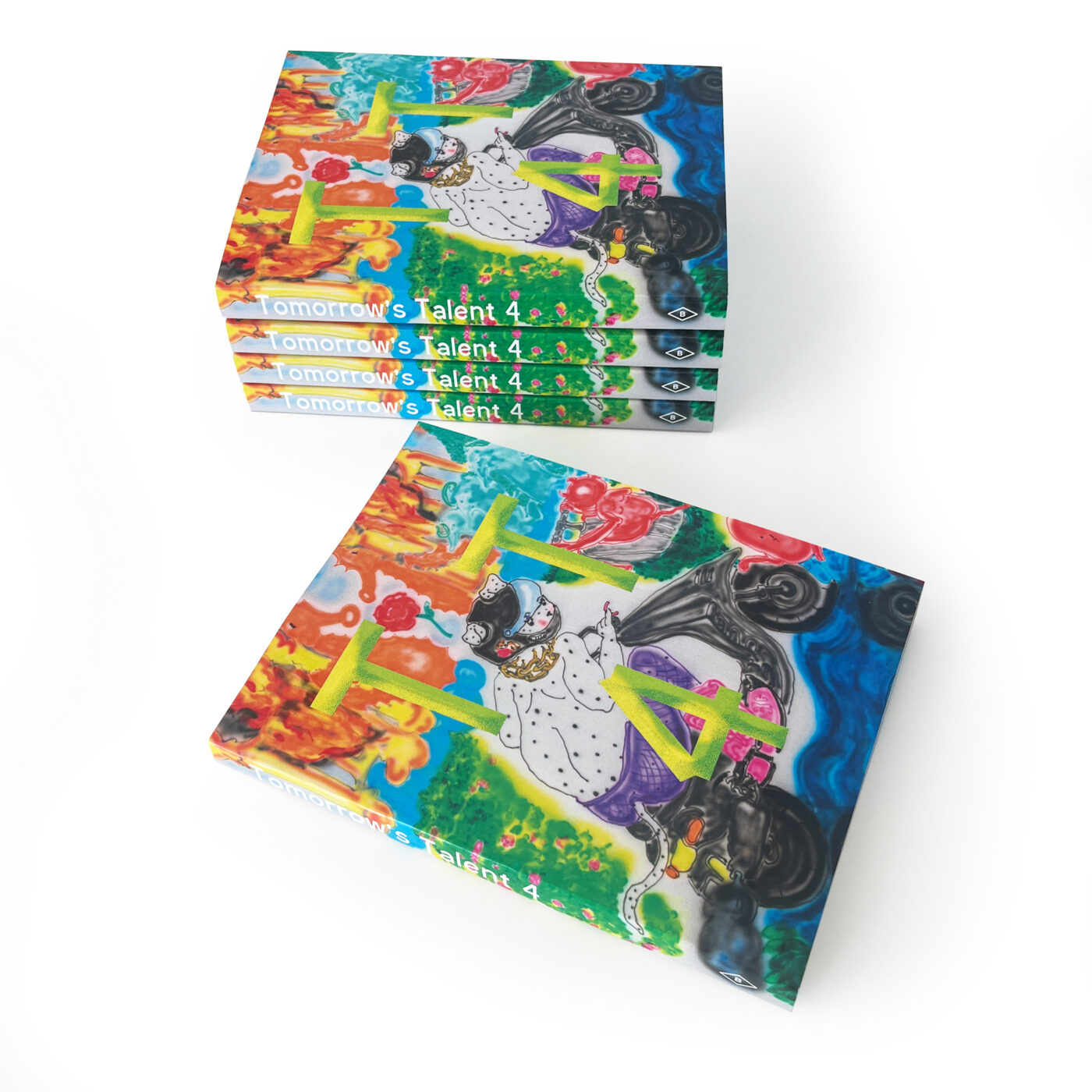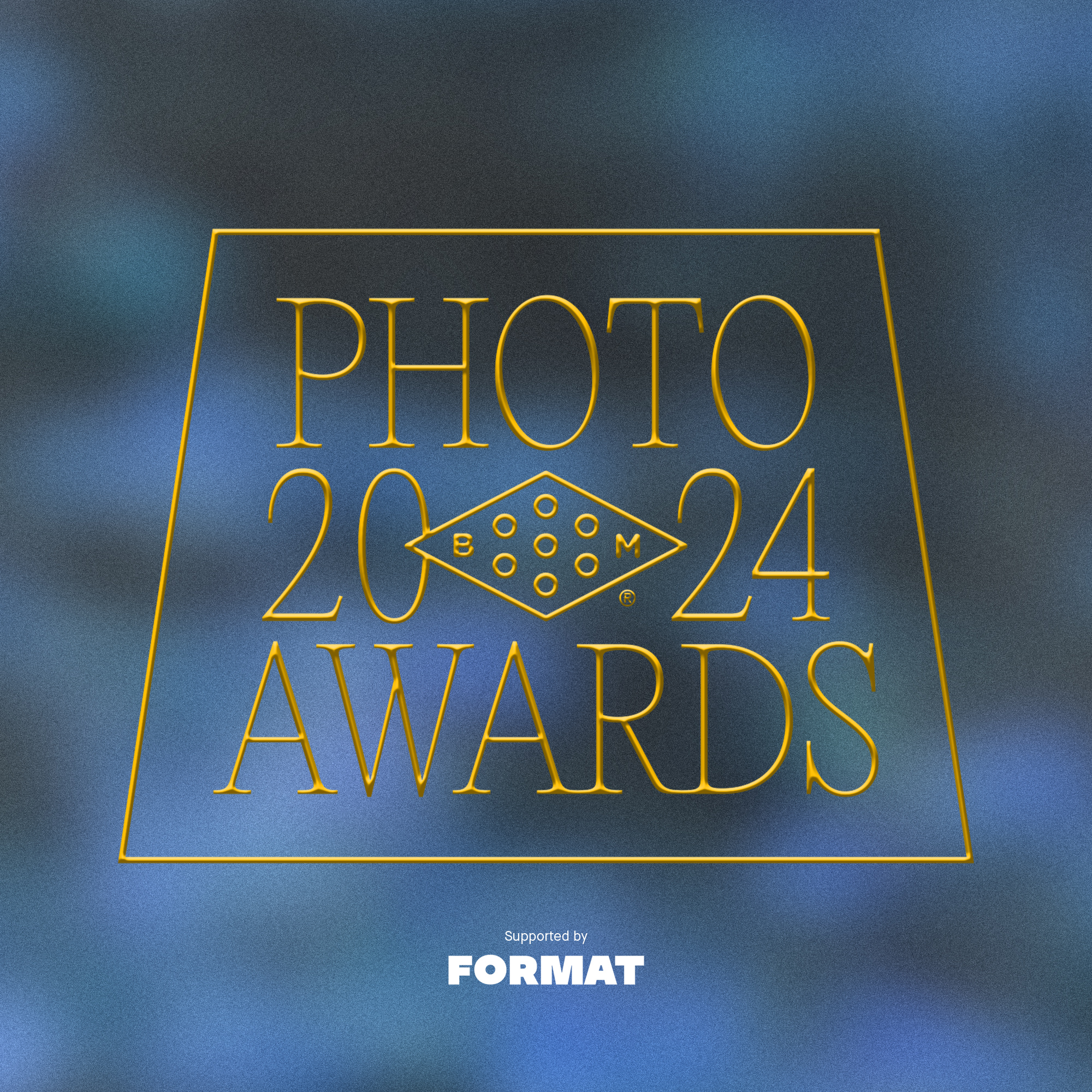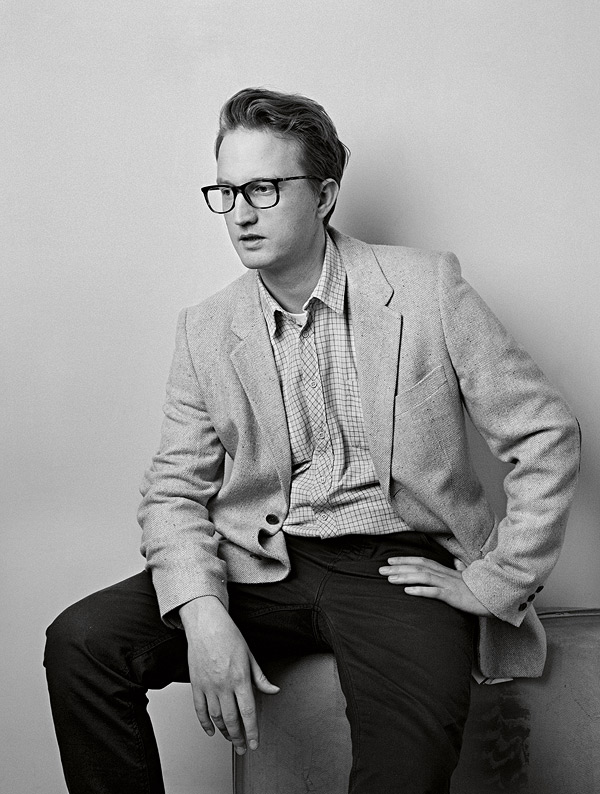
You’ve probably seen Bendik Kaltenborn’s work in places like The New Yorker or Todd Terje’s album covers. Or perhaps you’re already an avid fan of his shenanigans with the Dongery comic collective. Either way you should be excited to know that Kaltenborn’s latest collection of random gags and comics, Adult Contemporary, is now available in English. Thanks to Drawn & Quarterly we have a copy to give away!
Kaltenborn was also nice enough to answer some questions about his process, the things he hates and those that keep him happy. Read the full interview below. And, in the spirit of the book’s title (inspired by the term for cheesy, ballad-heavy easy listening) leave your favourite dad joke in the comments section for your chance to win!
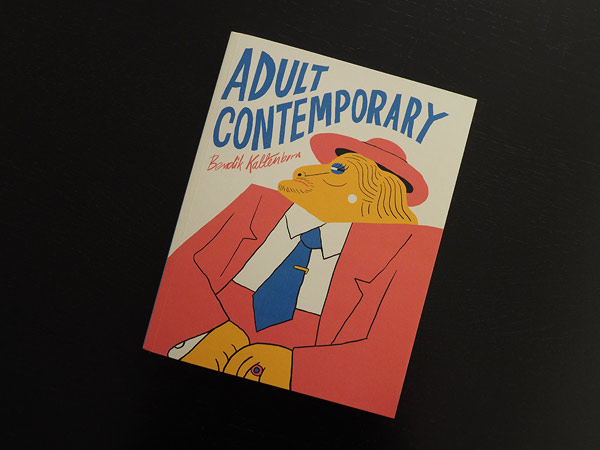
Kimi Hamada: Would you mind setting the scene for us a bit? Where are you at the moment? If you’re listening to music in the background, what are you listening to?
Bendik Kaltenborn: It’s Sunday morning and I’m at my apartment at Sagene in Oslo, sitting on my way too soft sofa that’ll probably destroy my back one day. The dishwasher is my soundtrack right now, but next to the record player lies some records I recently picked up in Madrid: The Railway Children, Julia Holter, The Lyres, The Subway Sect. And Sade, she’s always lying within an arm length’s reach. What the heck, I’m gonna put on a record; The Railway Children – Reunion Wilderness.
KH: Your work has a very improvisational feel to it but do you have a daily routine or anything specific you find yourself coming back to regularly when working?
BK: Yes, I work very much improvised and base many decisions on gut feeling. I’m an unorganized person so other than walking to my studio, routines don’t exist in my life. I guess that’s why I’m better at making illustrations and short comics that don’t demand a lot of planning. I can just do it quickly before I start messing things up, like I’m doing big time with a longer comic I’ve been working on for years.
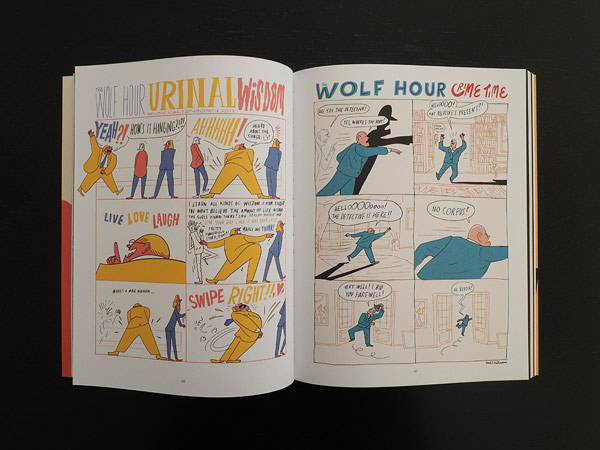
KH: You do so many different things (illustration, graphic design, posters, comics, album covers, animation). Do you approach projects differently depending on what they are or is your creative process more or less the same?
BK: I love to work differently and get bored and grumpy if I do too much of the same. I also guess it’s a common thing for illustrators to have the fear of stagnating and getting stuck in a particular style. However, I have different approaches to my several ways of working. For instance, the only times I do watercolours and ink is when I’m alone in my cabin in the mountains. There I can spend hours and days on a single drawing, listening to the radio and just get totally absorbed by drawing, like when I was a kid. It’s quite different from the commissioned jobs that I do on my Wacom Cintiq, where I have a totally different speed. Not that I’m rushing, but I’m thinking fast and all over the place. Very often improvising and testing out loads of different ideas and compositions quickly in towering amount of layers in photoshop. Many people assume I’m working with vector in Illustrator, but I always work in Photoshop. I don’t like the way Illustrator is based more on construction than drawing, if I haven’t gotten it all wrong.
Some comics are made on the go after I’ve heard something in a café or on the bus that triggered a short story. I’ve kept these rough comics like they are in Adult Contemporary because I’m afraid something might be lost if I translate them to a carefully rendered comics, and besides I think they add a nice variation together with the other cleaner stuff in the book. In any case, I love these very different ways of working both on paper and digitally, I think this variety helps me not getting tired of drawing.
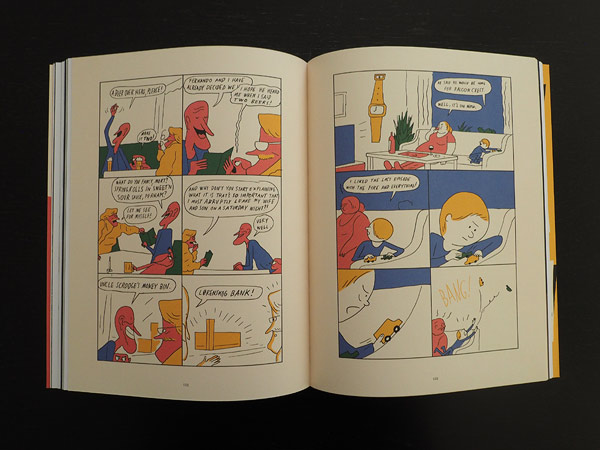
KH: We featured the wonderful animation you did with Espen Friberg for Todd Terje‘s “Alfonso Muskedunder” on our site earlier this year. When you spoke with Friberg and Terje for It’s Nice That, you mentioned that most people assume Friberg directed and you animated, whereas things were pretty evenly split. That kind of working relationship is no doubt unique to the two of you but are there things you’ve learned (tips or advice) you could share about what it takes to establish that kind of dynamic?
BK: I can see why people believed our roles was divided that way, since I usually do all the visuals for Terje by myself, and Espen had recently directed the two previous videos for Terje, although they were live action. For the Alfonso Muskedunder process I had with Espen it was important to make sure to keep it interesting for the both of us all the way, to make it something we both really felt like doing and to have fun with. I guess the video seems very improvised and random but we actually spent weeks just planning every scene and putting them together in a way that somehow felt right to us. I’ve known Espen for many years and we’ve done many things together, but this was without doubt the biggest one. I think one of the key elements of our teamwork is that we listen to each other and don’t force stuff through. I guess we’re both mild guys to an almost comical degree, but at the same time we manage to make decisions.
I’m also part of a comic collective called Dongery, where we meet up and just pass the papers around and make comics like in a jam session, so I’m used to working together with people that I share a very close mindset with. I think it’s both fun and important to work like this with others, since you manage to snap out of your own limited way of thinking for a while.
KH: Speaking of that video, you mentioned that the wasp came about because you were drawn to the idea of working intensely with something you hated. How often is that a motivation for you? Are there other instances of that at work in Adult Contemporary?
BK: Hah, I was about to answer that there are no such instances in Adult Contemporary since it’s mostly my own personal work that I love to work with, but now that you mention it, there’s a lot of things I despise going on in that book! I hate selfish, loud and narrow people, but my book is densely populated with them. I guess I just love working with them in comics, it’s just so fascinating to be able to orchestrate situations with people that you in real life just wanna stay miles away from.
I actually dreamt of wasps last night; I was in a small boat with a friend and he told me the wasps were getting bigger these days, around 10 inches long!
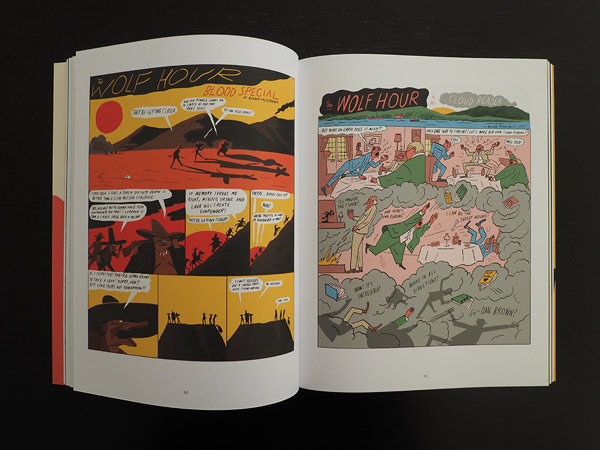
KH: Liker Stilen (a.k.a. Adult Contemporary), is currently available in 5 different languages. Visual-based stuff obviously has a bit of an advantage over other mediums when it comes to translation but are there any moments in your latest book that you feel don’t translate?
BK: There’s a lot with Liker Stilen that I initially thought would be impossible to translate, since so much is really internal Norwegian stuff with lots of fine nuances of local phenomenas. And playing with language is one of the main things for me when I make comics, so I’m always afraid something subtle will get lost in translation to languages I can’t read or double-check. But thanks to my amazing foreign publisher and translators that really dived deep into this, I feel quite confident that nothing gets lost. I don’t speak Spanish or French, but for the translation of my books, they’ve been very thorough and we had lots of dialogue about all these small weird Norwegian things so that they’ve been able to come up with similar alternatives from their country. I really feel that I have a fantastic connection with them, that they understand exactly what I mean and why it’s funny. Sometimes I even feel that they understand what I’m doing better than myself. Also, when I read Spanish or French reviews (with google translate) I notice that the language is one of the things they applaud.
For the English version, I did the translation myself together with Tom Devlin, which was another fun process. The title was the biggest challenge since the original was based on an untranslatable Norwegian saying, but one night a friend of mine introduced me to some very cheesy music along with the term “adult contemporary” and it was just perfect for my book.
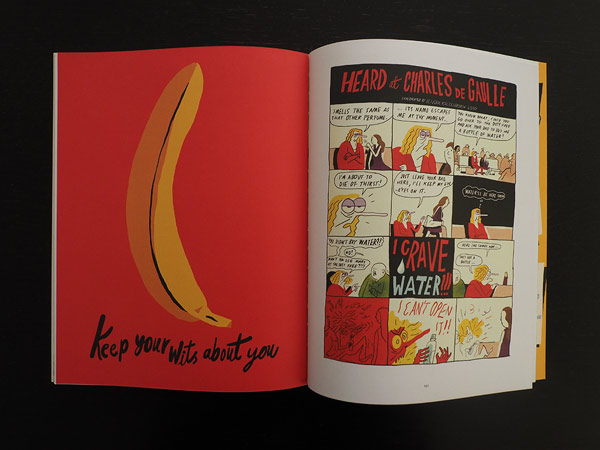
KH: Given the attention you pay to typography (not just the words but the shapes of the letters), are there any translations you actually prefer, even on a purely aesthetic level?
BK: The hand lettering and letter shapes is something I’m super picky about and I would never have thought that I would ever let anyone else do it for me, but for the Spanish, French and Swedish version they just did a wonderful job, being able to step right into my shoes and understand exactly how I think and work.
KH: I love Todd Terje’s endorsement for Adult Contemporary: “‘Getting’ the Dongery humor when I was younger made me feel like I was part of a secret invite-only club. I actually still feel that way. So please don’t ‘get’ this book.” Your work obviously inspires a kind of possessiveness for long-time fans but your style (the colours and shapes especially) is also very inviting. I’m interested in how you see your own work. Do you think it’s something that everyone can relate to? Do you want it to be?
BK: I make most of these comics just for fun, for myself, without having a specific audience in mind, but I think there’s a lot of stuff that everyone can relate to. Many of the characters are inspired by people I see in the streets or on the bus, so there’s a lot of realism in there, no matter how mixed up with craziness and fantasy. I get very happy when I hear that people like this book, since it’s so personal in a way and it means that people relate to the way I see the world, no matter how twisted I present it. But if I’m at a dinner party and the person next to me ask me to describe my comics, I have no clue what to say. Except that “it’s not … strips. Oh, but it’s also some strips, come to think of it. But, yeah. It’s …”
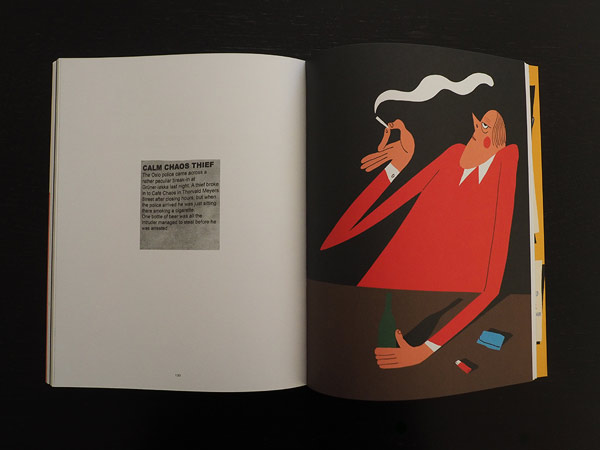
KH: One of my favourite sections is the illustrations that accompany random newspaper clippings of bizarre incidents, like the man who puts his fingers through some woman’s mail slot and starts speaking to her cats. Have you come across any more of these stories recently?
BK: That’s the sad thing about these iPad times; I don’t have a daily paper any more, and therefore I no longer cut out stuff from the paper. And these small notes don’t appear in the web papers in the same way. But I saw this merchant on Norwegian local TV that always walked bare feet, even outside in the snow. He ran a tool store and made his bare feet the profile of the store, trying to link every sale with the fact that he doesn’t wear shoes, like “bare feet bargain” on wrenches and other pretty long shots. The next reportage was a wordless piece with an old man just brushing some snow off his boat with a broom for five minutes. But I guess this is more calming than hilarious.
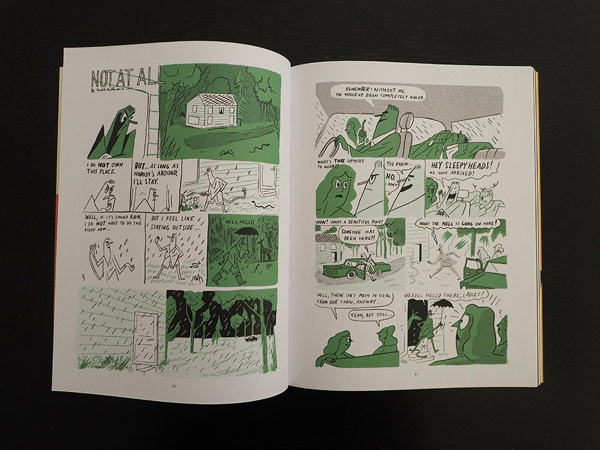
KH: Adult Contemporary is a collection of comics you made in your spare time. How important is “free time” to you when it comes to producing your best work?
BK: It’s extremely important to me. I really love working with commissions, but at the same time I never planned to be an illustrator. I’ve always made comics and weird drawings just because it makes me feel good, and since drawing is the only thing I’m good at illustration was a natural way to make a living. I’m in the lucky position right now where I have lots of work, but if there’s too much time between producing a personal piece, no matter how small, I get blue and grumpy. It might sound silly and romantic, but I need to produce these stupid things in order to stay happy. That’s why the lonely drawing time in the cabin is essential to me.
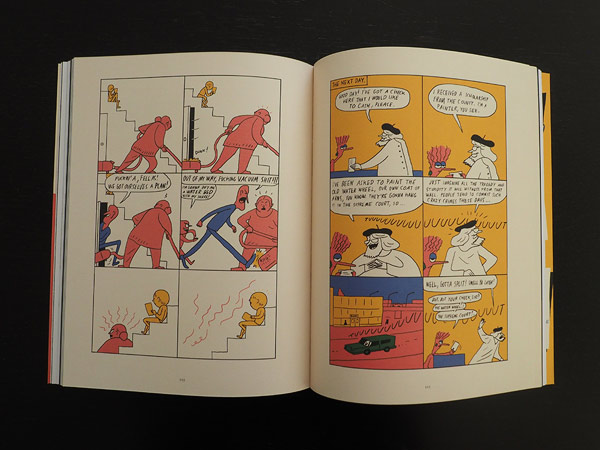
KH: What other things keep you going? Do you have any recommendations? I mean, aside from your own, what books, music, artwork, etc. should Booooooom readers be rushing to check out?
BK: Rush to check out…
Molloy by Samuel Beckett: It’s exhausting but hysterically funny and rewarding if you manage to get through the first pages. It’s extraordinarily tragic, and in a way it’s just a long non-stop rant about pains and aches from an old uncle, but in the most funny way possible.
My all time favorite band is The The, but when I draw watercolors I listen to music like: Earth, Spiritualized, Cocteau Twins, Hailu Mergia, Laurie Anderson, Daniel Herskedal, Ravel played by Walter Giesking etc.
The Dark Souls series: I love video games, and this game in particular is very inspiring in terms of mood and atmosphere. It manages to revive some feelings from my childhood, with it’s pure focus on spectacular monsters and basic video game mechanics. I also love how they just keep the story way in the background and hidden in the fog, but at the same time you sense that there’s a solid thought behind it all. It’s just very mystical and absorbing. It inspires me to draw monsters again and it’s really fun!
3 Women: This cult masterpiece by Robert Altman is by many considered the missing link between Bergman’s Personae and Lynch’s Mulholland Drive, two other big inspirations to me. I accidentally discovered this movie on Netflix recently and was totally blown away by it. Sissy Space and Shelly Duwall are both totally amazing in this movie.
